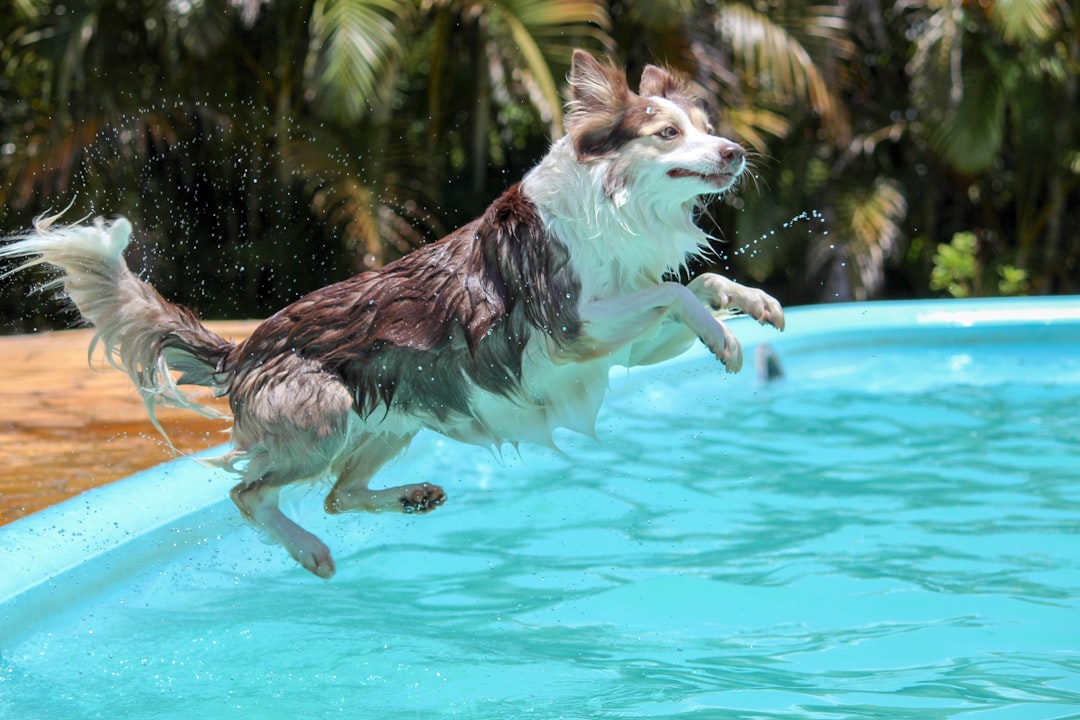Dive into the Benefits: Why Swimming is a Dogs Best Exercise Buddy
The article explores the various physical health benefits of swimming for dogs, including low-impact exercise, faster injury recovery, weight loss, cardiovascular and respiratory improvements, mental stimulation, stress relief, and specific benefits for dogs with joint disorders.
Overview of the Benefits of Swimming for Dogs
Swimming stands out as an exceptional form of exercise for dogs due to its low-impact nature, which is gentle on their joints and suitable for dogs of all ages and sizes. For instance, overweight dogs can greatly benefit from swimming as it helps in weight loss by efficiently burning calories, aiding in the management of obesity. This makes swimming a valuable exercise option for dogs struggling with weight issues, providing a fun and effective way to shed extra pounds and improve their overall health.
Moreover, the buoyancy of water plays a crucial role in reducing pressure on the joints, making swimming an ideal exercise for dogs dealing with arthritis or other joint problems. This joint-friendly aspect of swimming allows dogs with such conditions to engage in physical activity without exacerbating their discomfort or causing further harm. By providing a full-body workout, swimming helps dogs in maintaining their overall health and fitness levels, ensuring they lead happy and active lives.
The Physical Benefits of Swimming for Dogs
Swimming not only aids in the faster recovery of dogs from injuries but also helps in improving their overall physical health in various ways. For overweight dogs, swimming is an excellent exercise option as it allows them to burn calories efficiently, promoting weight loss and aiding in obesity management. The full-body workout that swimming provides is not only beneficial for weight loss but also helps in enhancing muscle strength and cardiovascular fitness in dogs.
Furthermore, the low-impact nature of swimming makes it a joint-friendly exercise for dogs of all ages and sizes. This aspect is particularly advantageous for dogs with arthritis or joint issues because the buoyancy of water reduces the strain on their joints, allowing them to exercise without discomfort or exacerbating their condition. As a result, swimming serves as a gentle yet effective way to maintain the mobility and overall health of dogs with such health concerns.
Cardiovascular and Respiratory Benefits
Swimming is an excellent exercise for enhancing the cardiovascular system of dogs, which in turn improves heart health and endurance. This form of exercise helps dogs to build stamina and increases their overall cardiovascular fitness, making their hearts stronger and more efficient at pumping blood. For instance, when a dog swims, their heart rate increases, which is similar to the effects of aerobic exercises on humans. This increased heart rate strengthens the heart muscle over time, promoting better circulation and oxygen delivery to the body’s tissues.
Moreover, swimming aids in enhancing lung capacity in dogs, facilitating improved oxygen intake and circulation throughout the body. The repetitive breathing patterns during swimming promote the expansion and contraction of the lungs, which enhances the overall efficiency of the respiratory system. This increased lung capacity not only benefits dogs during swimming activities but also in their day-to-day activities, allowing them to have better endurance and stamina in various physical tasks. Additionally, the controlled breathing required while swimming helps dogs regulate their breathing, leading to better overall respiratory health.
The resistance provided by water during swimming offers a unique advantage for dogs’ cardiovascular and respiratory health. Unlike traditional land-based exercises, swimming against the water’s resistance engages more muscle groups and elevates the intensity of the workout. This resistance training helps to strengthen the heart, improve blood circulation, and boost lung function, all of which are crucial for maintaining optimal cardiovascular and respiratory health in dogs.
Mental Stimulation and Stress Relief
Swimming not only provides dogs with mental stimulation and cognitive engagement, promoting their overall mental well-being, but it also offers a unique opportunity for dogs to explore their surroundings in a novel way. For example, swimming in a lake or pool exposes dogs to new sights, sounds, and smells, which can enrich their sensory experiences and keep them mentally sharp.
Moreover, the calming and therapeutic experience of swimming can significantly help in reducing stress and anxiety in dogs. For instance, the sensation of water around their bodies and the rhythmic movements required for swimming can create a sense of security and relaxation for dogs, leading to a decrease in their stress levels. This can be particularly beneficial for dogs that are prone to anxiety or have experienced trauma in the past.
Additionally, the soothing effect of swimming on dogs can extend beyond the physical activity itself. The post-swim period, where dogs may feel tired but content, can contribute to an improved mood and overall emotional well-being. This sense of satisfaction and relaxation after swimming can help dogs release pent-up energy and tension, leading to a calmer and more balanced state of mind.
Specific Benefits for Dogs with Joint Disorders
Swimming is particularly beneficial for dogs with joint disorders such as arthritis or dysplasia due to its low-impact nature and joint-friendly characteristics. By engaging in swimming sessions, these dogs can exercise without putting excess strain on their joints, which is crucial for their overall well-being and comfort. For example, a dog suffering from arthritis may find it challenging to engage in high-impact activities like running, but swimming allows them to move their joints and muscles in a controlled and supportive environment. This gentle form of exercise helps in maintaining muscle tone and joint flexibility, which are vital for managing conditions like arthritis.
Moreover, swimming can contribute significantly to the rehabilitation process for dogs that have undergone orthopedic surgeries or are recovering from injuries. The buoyancy of water supports the dog’s body weight, reducing the stress on their limbs while still allowing them to engage in physical activity. This aspect is especially beneficial during the recovery phase when the dog needs to rebuild strength and mobility without risking further damage to the healing tissues. By incorporating swimming into the rehabilitation plan, veterinarians and pet owners can facilitate a smoother recovery process and improve the dog’s overall physical condition.
Water Safety and Supervision Tips
Ensuring the safety of dogs during swimming sessions is paramount to prevent accidents and exhaustion. Proper supervision not only safeguards the dogs but also allows for immediate intervention in case of any unforeseen circumstances, ensuring a positive swimming experience for the furry companions. For example, novice swimmers or dogs with limited swimming experience may panic or tire quickly, emphasizing the need for attentive monitoring to avoid any mishaps.
Introducing dogs to water gradually is a fundamental step in acclimating them to the swimming environment. By starting in shallow water and gradually increasing depth, dogs can build confidence and trust in the water, making them more comfortable swimmers. For instance, using positive reinforcement techniques such as treats and verbal praise can help create a positive association with water, encouraging dogs to enjoy their swimming sessions and feel at ease in the aquatic setting.
Additionally, providing regular breaks during swimming sessions is essential in preventing overexertion and ensuring the well-being of dogs. Monitoring for signs of fatigue, such as heavy breathing or decreased energy levels, allows pet owners to gauge their dog’s endurance and adjust the swimming session accordingly. By prioritizing safety measures and being attentive to the needs of the dogs while swimming, pet owners can create a safe and enjoyable experience that promotes both physical exercise and mental stimulation for their canine companions.



